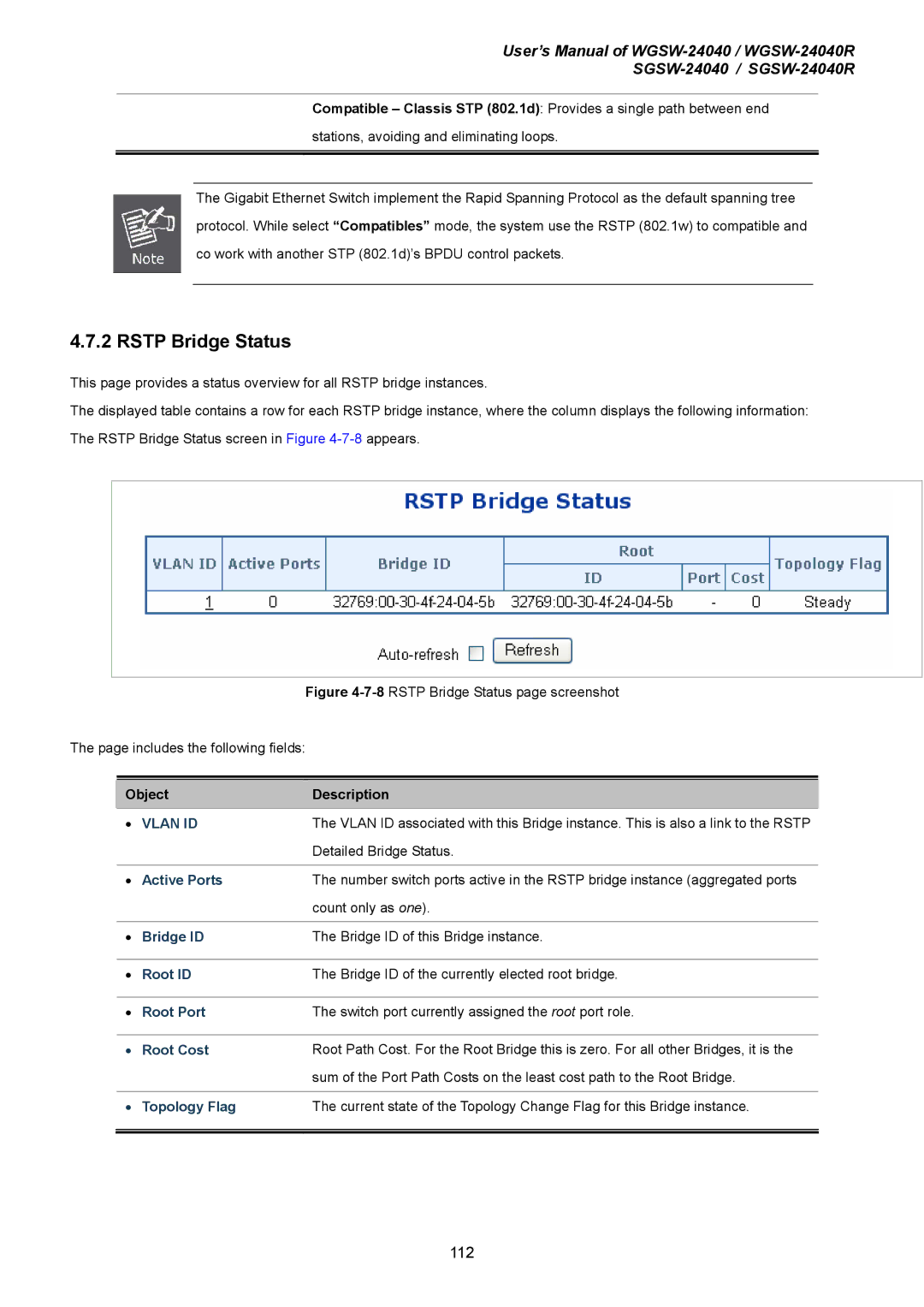
User’s Manual of
Compatible – Classis STP (802.1d): Provides a single path between end stations, avoiding and eliminating loops.
The Gigabit Ethernet Switch implement the Rapid Spanning Protocol as the default spanning tree protocol. While select “Compatibles” mode, the system use the RSTP (802.1w) to compatible and co work with another STP (802.1d)’s BPDU control packets.
4.7.2 RSTP Bridge Status
This page provides a status overview for all RSTP bridge instances.
The displayed table contains a row for each RSTP bridge instance, where the column displays the following information: The RSTP Bridge Status screen in Figure
Figure 4-7-8 RSTP Bridge Status page screenshot
The page includes the following fields:
|
|
|
Object | Description | |
• | VLAN ID | The VLAN ID associated with this Bridge instance. This is also a link to the RSTP |
|
| Detailed Bridge Status. |
|
|
|
• | Active Ports | The number switch ports active in the RSTP bridge instance (aggregated ports |
|
| count only as one). |
|
|
|
• | Bridge ID | The Bridge ID of this Bridge instance. |
|
|
|
• | Root ID | The Bridge ID of the currently elected root bridge. |
|
|
|
• | Root Port | The switch port currently assigned the root port role. |
|
|
|
• | Root Cost | Root Path Cost. For the Root Bridge this is zero. For all other Bridges, it is the |
|
| sum of the Port Path Costs on the least cost path to the Root Bridge. |
|
|
|
• | Topology Flag | The current state of the Topology Change Flag for this Bridge instance. |
|
|
|
|
|
|
112
